Being in Korea, almost every student in my class has a smart phone. Now, I know that they are experts in using them, so why should I not tap into their excitement in being able to use their phones in class?
I already allow them to use their devices during a word study period in which once a week they have to look up the definitions of words they are analyzing. Taking this into consideration, I decided to figure out a way to use them in my lesson on people’s access to clean water around the world.
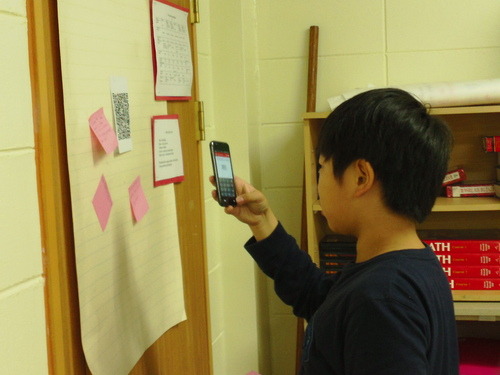
Now, also in Korea, there are QR codes everywhere you can imagine. Thus, I knew my students would be familiar with what they are. Rather than just printing off photos from National Geographics phenomenal website on freshwater and the environmental issues surrounding it, I wanted a way to have my students react authentically to them, in essence to be surprised.
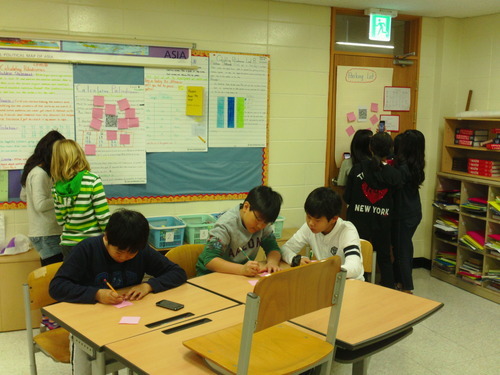
I decided to change the photos from National Geographics gallery on Freshwater Conflict photos, by pasting their URL into a QR code generator, like this one here. Then, I printed off the images of the QR codes and hung them around the room. Students, with a partner, silently took their device around the room and using the Red Laser app, scanned the codes. They then answered three items on post-its about the photo: 1) how does it make you feel? 2) What did you learn? 3) Do you have any questions?
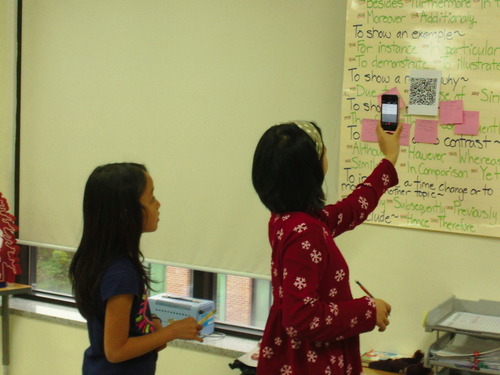
They would put up the post-its by the QR code and then wander to another station in the classroom to check that one out. It was remarkable to see the students working together to figure out how to use the QR codes and reading about the photos on their phone. Because many of the students had never thought about the scarcity of water, this was an incredibly powerful activity that sparked a great discussion.
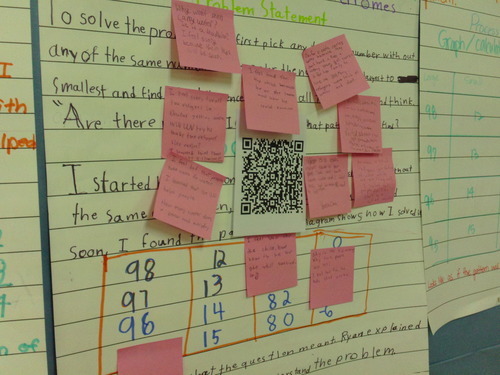 Additionally, students came back to their desks to find a fact about water. Something such as, “More than 3.4 million people die each year from water, sanitation, and hygiene-related causes. Nearly all deaths, 99 %, occur in the developing word,” from water.org.
Additionally, students came back to their desks to find a fact about water. Something such as, “More than 3.4 million people die each year from water, sanitation, and hygiene-related causes. Nearly all deaths, 99 %, occur in the developing word,” from water.org.
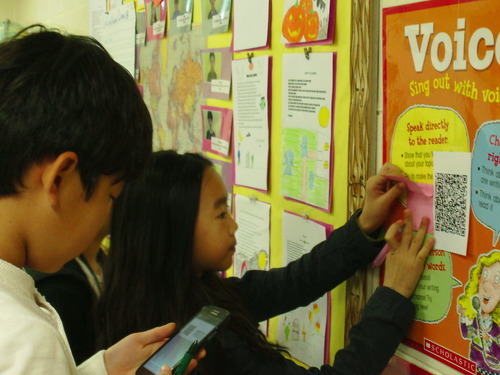
For our next two lessons on water and its scarcity, we’ll be reading the book One Well by Rochelle Strauss and then we will read non-fiction articles on water use in Africa, the importance of water and more. Articles can be found in many major newspapers on water and it is a wonderful way to have students read non-fiction which is becoming a bigger necessity as people must be able to take information from other sources and apply information or formulate opinions. Students will write their reactions to the article, what they learned, what they didn’t understand, and what they’d like to know more about.
Finally, we will analyze info-graphics about the use of water around the world and then take the information we learned in our non-fiction articles and create our own info-graphic as a class. Check out our website for some I downloaded off a pintrest search for water infographics.
No comments:
Post a Comment